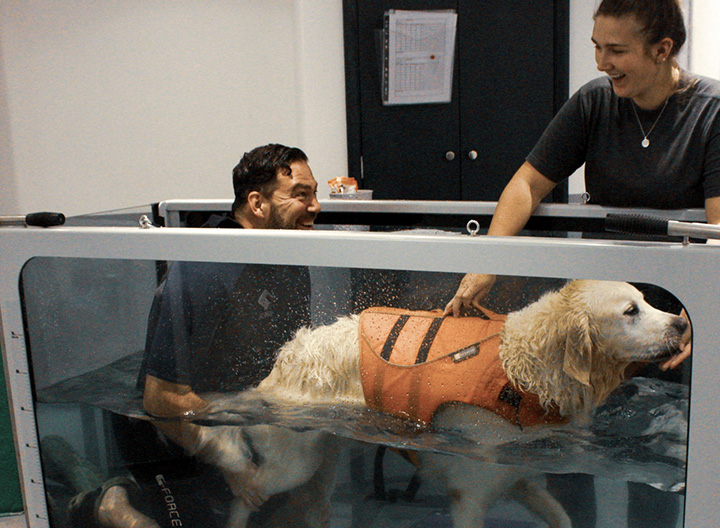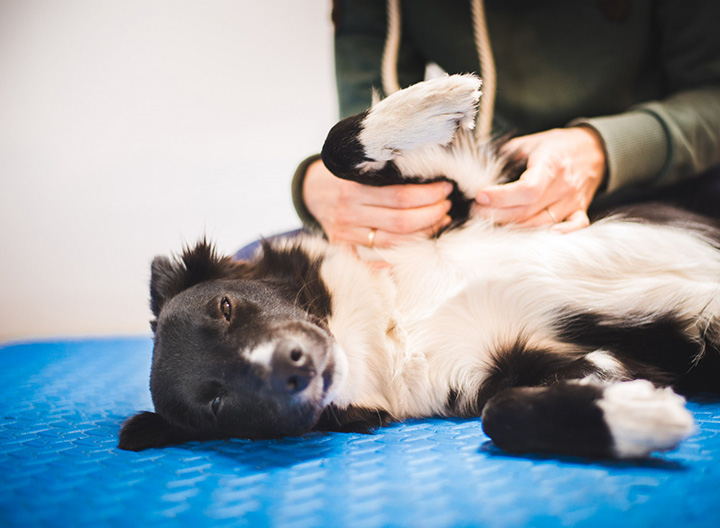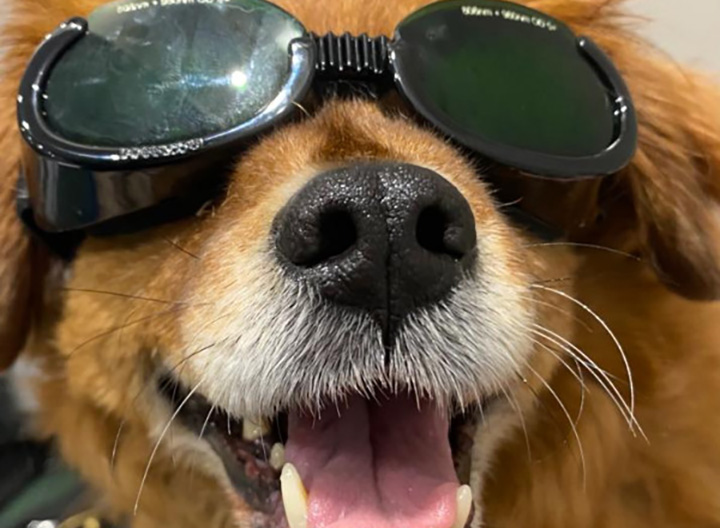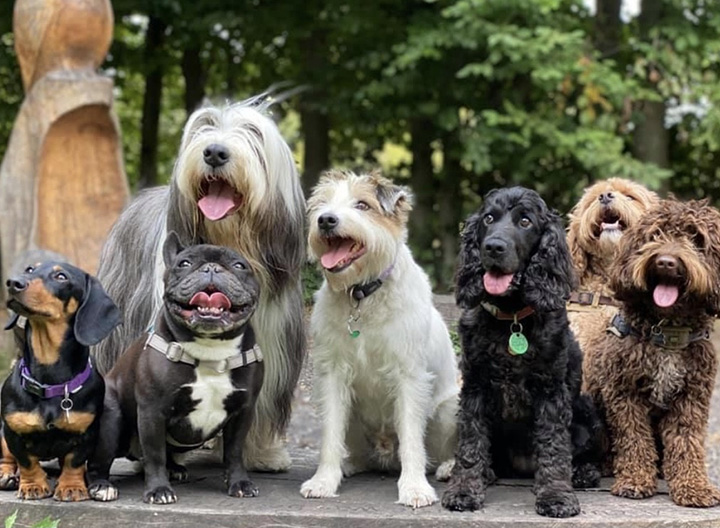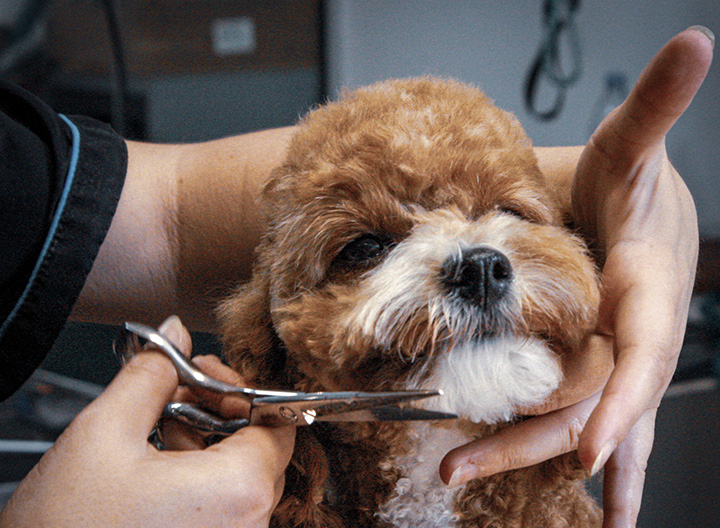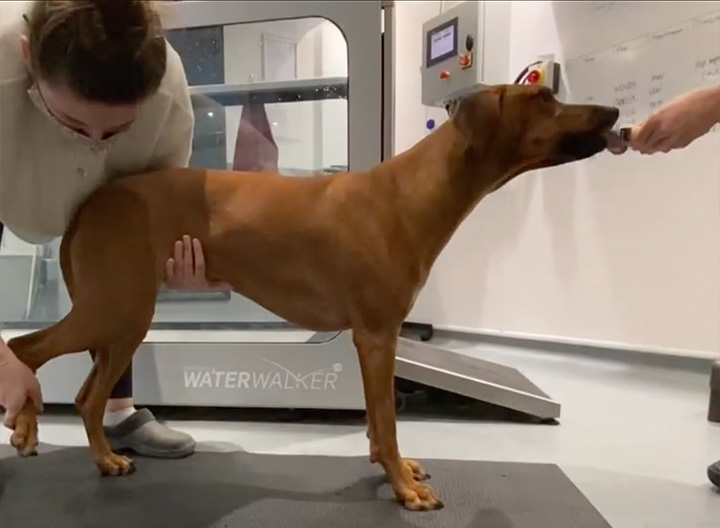Conditions & Treatments:
| Condition | Approach | Frequency | Guidance |
|---|---|---|---|
| Hip Dysplasia | We use either the pool or UWT depending on the severity and if the dog likes swimming. Pool typically makes dogs more tired than LWT | Once a week, every 1-2 weeks in winter, 2-4 weeks in summer | Lifelong condition, will need ongoing therapy to maintain muscle mass and slow down secondarv Osteoarthritis |
| Hip Surgery | Pre_op we use the UWT to build hind limbs and muscle to support weight post-op | Once a week | We aim to fully discharge after 6 months this usually depends on the muscle gain and lifestyle |
| Post-op, we still use the UWT to continue building muscle but also to improve gait | Once / twice a week | ||
| FHNE Surgery | Post-op we would use the UWT to build muscle and improve gait but would also use the pool to improve extension | Once / twice a week | |
| Elbow Dysplasia | We use either the pool or UWT depending on the severity and if the dog likes swimming | Once a week | Lifelong condition, will need ongoing therapy to maintain muscle mass and slow down secondary Osteoarthritis |
| Shoulder Conditions / Injuries | Tendon or ligament conditions benefit from the UWT as we can reduce the risk of lateral rotation. Orthopaedic conditions like OCD respond well to controlled sessions in the pool | Initially once a week, then every 2 weeks. We continue to decrease frequency as we see improvement | Most shoulder injuries are caused by repetitive strain and the right home exercise routines are key to successfully managing this condition |
| Cruciate (CCL) repairs / tears / ruptures
Luxating Patella |
Pre-op (and conservative management) - we use the treadmill to give a safe and stable treatment where we can improve hind limb muscle, gait and ultimately reduce discomfort | Initially once a week. then every 2 weeks. We continue to decrease frequency as we see improvement | Lifelong condition, will need ongoing therapy to maintain muscle macs and slow do secondary Osteoarthritis |
| Spinal Iniuries | We use UWT to help proprioception and neuro stimulation
Some dogs benefit from managed controlled swims, with 2 therapists, to see how they use their limbs in a non-weight bearing environment, especially tetraparetic / tetraplegic patients |
From 2 days after surgery), up to 3 times per week (wound is kept above water / dry)
Frequency reduces as we see improvement |
If proper gait and proprioception return we discharge. If this is a lifetime condition, some dogs require on-going therapy to maintain movement and avoid muscle deficiencies |
| Limb Fractures | We use either the pool or UWT with very high-water levels to provide a partial weight bearing environment to increase bone repair and to build muscle / improve gait | Initially once a week and building to 2 / 3 / 4 weekly intervals | Fractures typically repaired in approx. 12 weeks. OA is likely in the future |
| Osteoarthritis (OA) | Older dogs, in advanced stages. we use the pool to provide non-weight bearing exercise and reduce pain
Younger dogs we can use the treadmill because we have the opportunity to improve muscle and movement |
Weekly | Lifelong condition. will need ongoing therapy to maintain muscle mass and slow down secondary Osteoarthritis |

